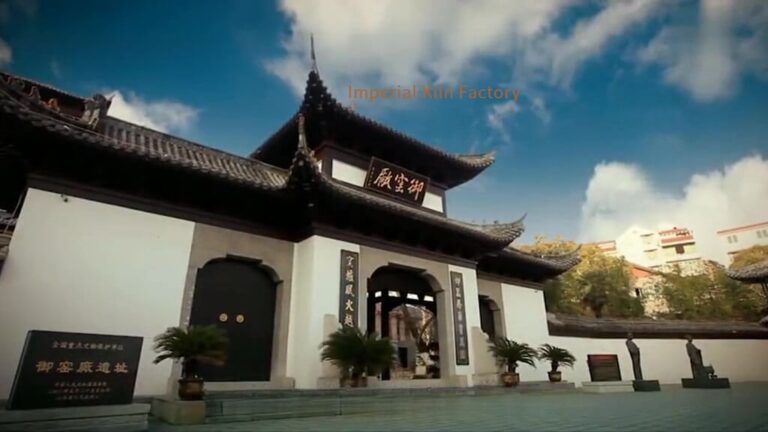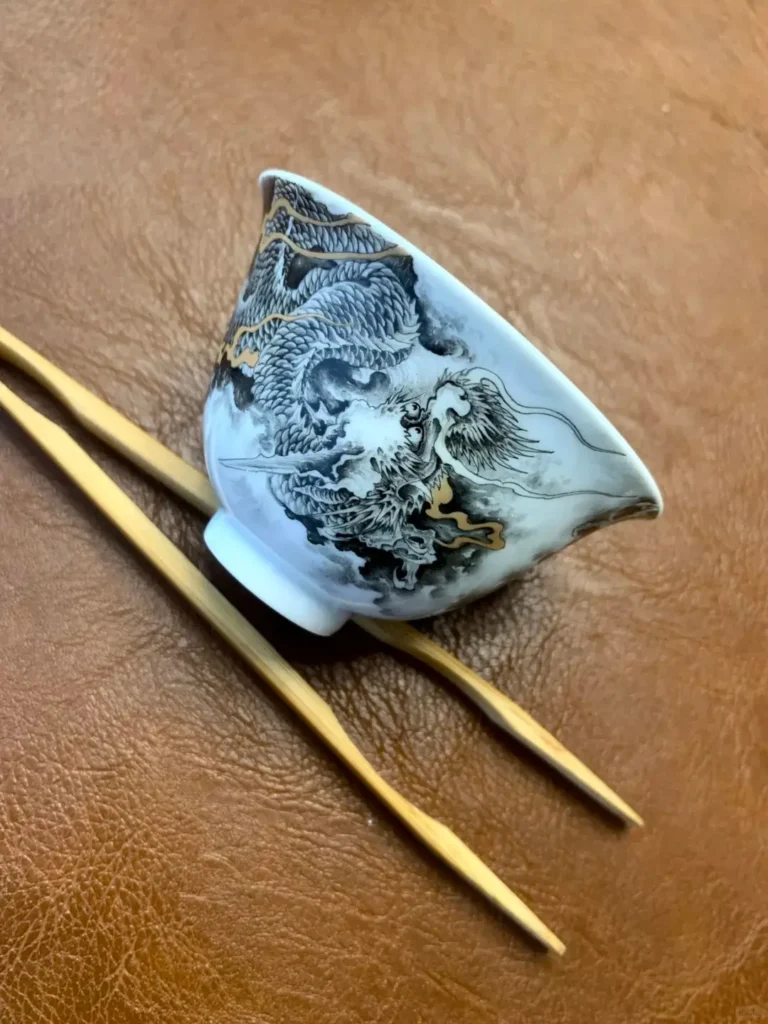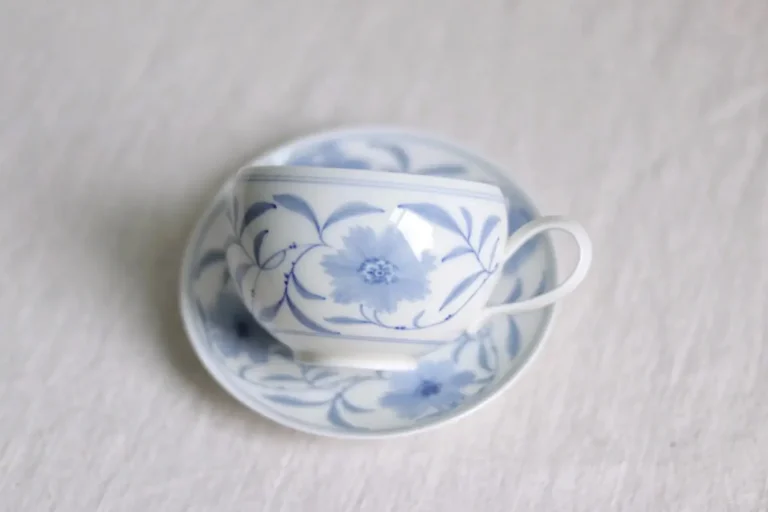Plum blossoms, orchids, bamboo, and chrysanthemums are known as the “Four Gentlemen” in traditional Chinese culture, symbolizing nobility, resilience, and elegance. They are also spiritual emblems celebrated in the writings of ancient literati. Each of these four plants represents a distinct spiritual realm, with bamboo and plum blossoms, in particular, holding significant cultural depth and unique vitality in both art and daily life. Today, we will explore how these cultural spirits can be embodied through hand-painted ceramic cups, starting from their symbolic meanings.
1. hand-painted ceramic cups Plum Blossom — Unyielding Integrity (The Martyr)
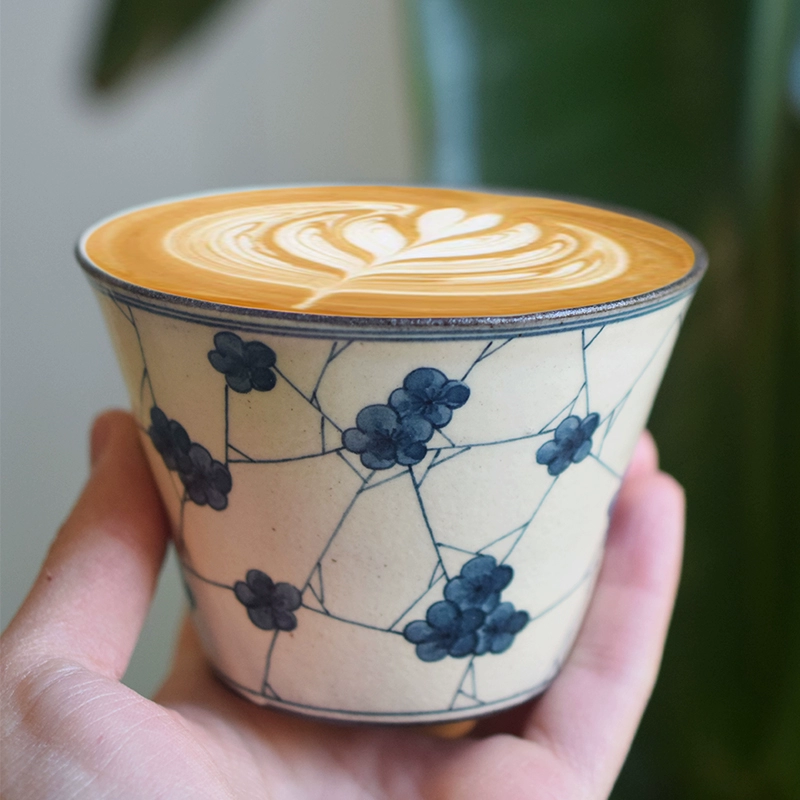
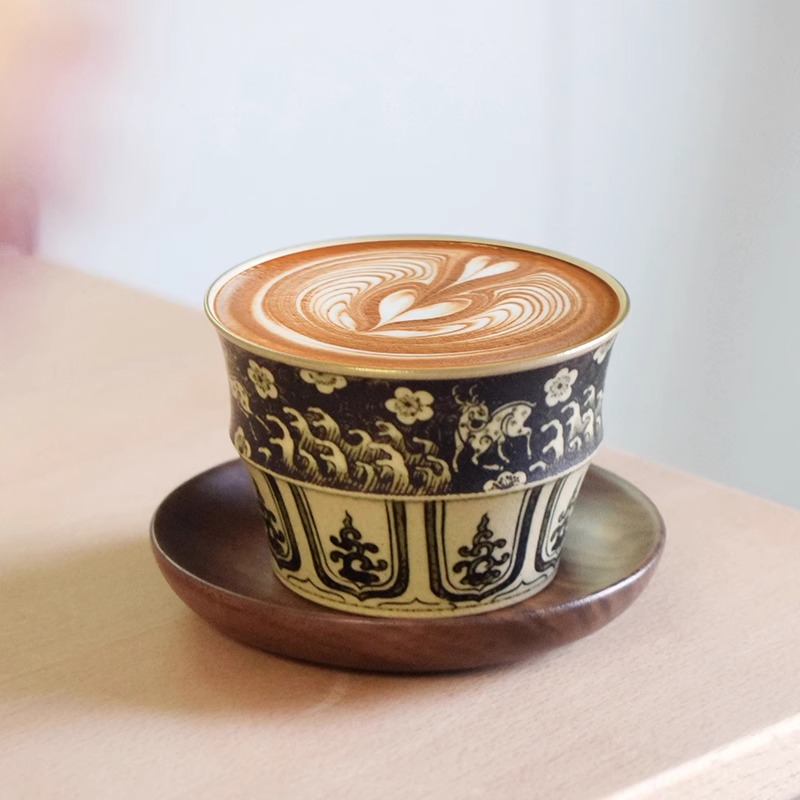
The plum blossom motif on hand-painted ceramic cups represents the virtue of “unyielding integrity,” symbolizing strength, perseverance, and independence. As the old saying goes, “One should not be arrogant but must have unyielding integrity!” Plum blossoms bloom in the harsh winter, their flowers pure as snow, resiliently flourishing amidst ice and snow. This demonstrates their ability to remain steadfast even in extreme adversity, pressing forward without surrender. Their purity is as immaculate as snow, and they bloom alone despite the bitter cold, embodying an unyielding spirit.
Corresponding Personality: The Martyr. The unyielding spirit of the plum blossom aligns closely with the martyr’s resolve, representing the perseverance of ideals and pursuits in the face of adversity, unshaken by external circumstances, and unwavering in one’s convictions. In reality, only those with noble qualities akin to the plum blossom and an indomitable attitude can truly embody its essence.
Classic Association: Martin Luther King Jr. was not only a great leader in American history but also a figure whose life trajectory resonated deeply with the “unyielding integrity” of the plum blossom. Facing racial discrimination, violent threats, and personal sacrifice, he remained steadfast in his beliefs, driving social change. His resilience and courage, like the plum blossom blooming defiantly in winter, earned him respect and brought hope to marginalized communities worldwide. Here, the plum blossom represents Martin Luther King Jr.’s solitary, noble, and uncompromising character.
2. Orchid — Quiet Virtue (The Recluse)
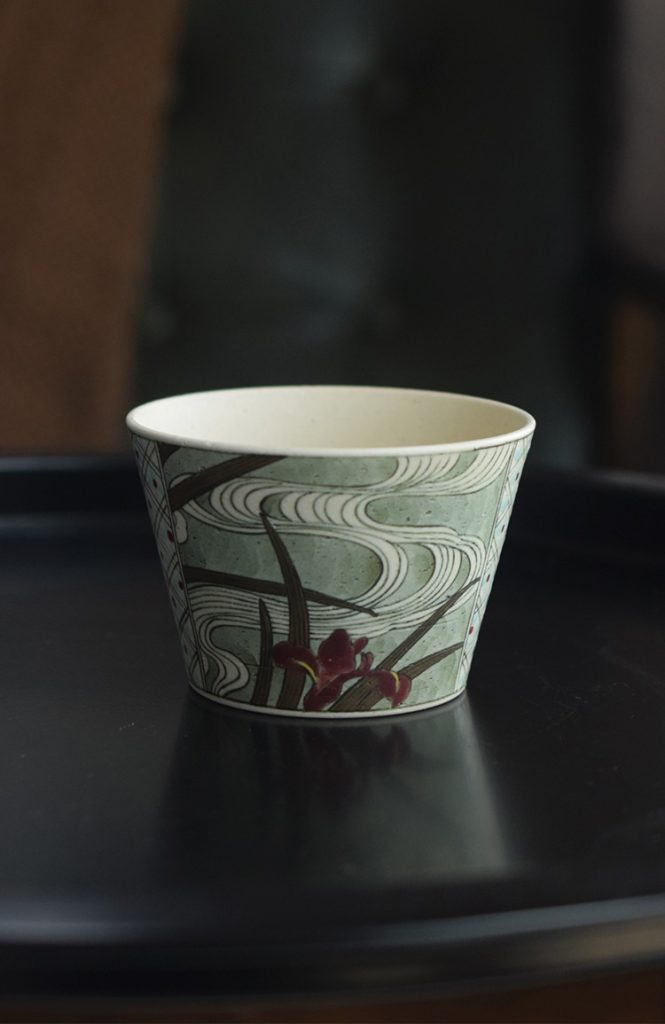
The orchid motif on hand-painted ceramic cups embodies “quiet virtue,” symbolizing purity, refinement, and serenity. Orchids typically grow in secluded mountain valleys, their fragrance subtle and elegant, representing those who transcend worldly concerns and embody purity.
Corresponding Personality: The Recluse. The spirit of the orchid mirrors the life of a recluse. Though small in size, its fragrance is profound. It neither seeks extravagance nor flaunts its beauty, often hidden in remote places. Only those who truly appreciate it can perceive its unique charm and aroma. The orchid’s “quiet virtue” represents not only an introverted, noble, and understated character but also a steadfast adherence to ideals and beliefs.
Classic Association: Qu Yuan used the orchid to symbolize the nobleman. In Li Sao, Qu Yuan frequently mentioned orchids, associating them with the qualities of a nobleman. He linked the orchid’s delicate fragrance to his own lofty sentiments, expressing his independence and resilience amid worldly chaos. Qu Yuan’s orchid symbolizes those with self-discipline, self-restraint, and an unwavering moral compass. This quality is reflected in many historical Western figures, particularly those who adhered to principles in solitude, unmoved by external temptations. A prime example is Henry David Thoreau, a 19th-century American writer, philosopher, naturalist, and social activist renowned for his reclusive lifestyle and advocacy of individual independence. Henry David Thoreau epitomizes the “quiet virtue” of the orchid. He chose seclusion, returning to nature and living a minimalist life, far from the noise and material temptations of society. His solitary and resolute nature, like an orchid growing quietly in a secluded spot, emits a subtle fragrance that attracts those seeking inner peace and self-awareness.
3. Bamboo — Humble Strength (The Sage)
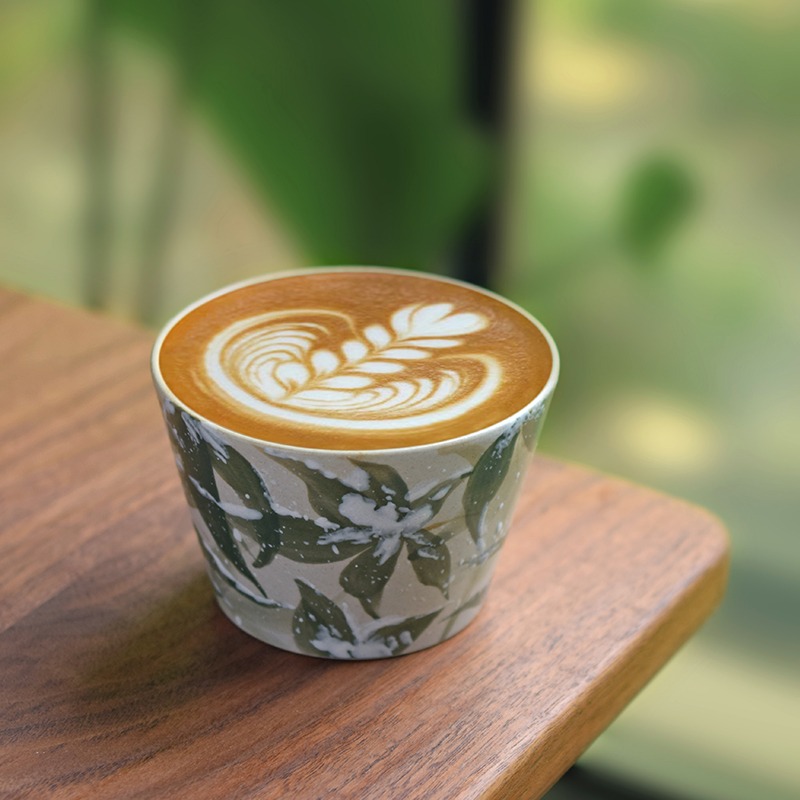
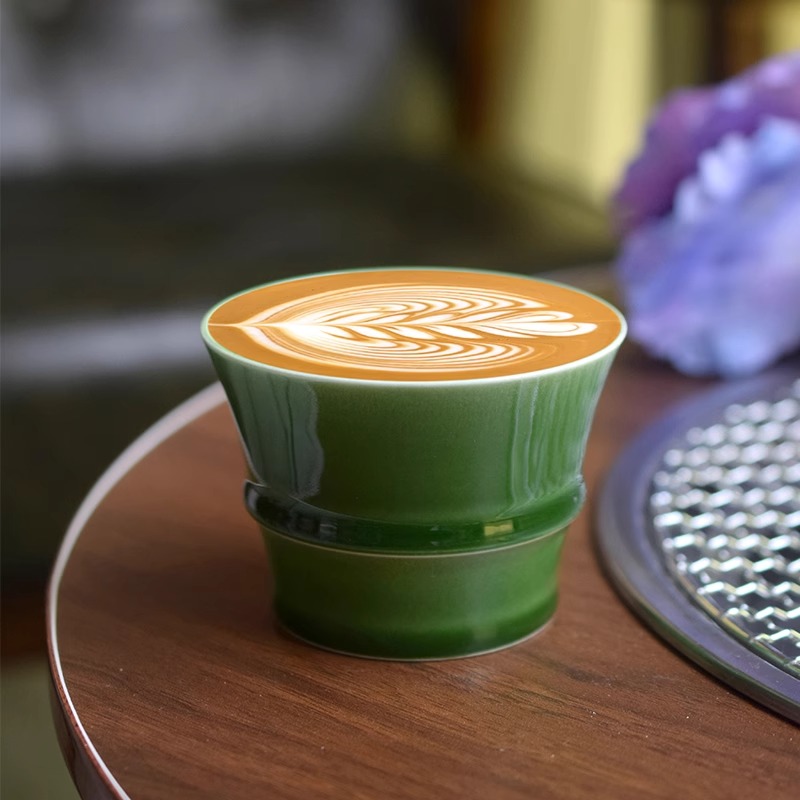
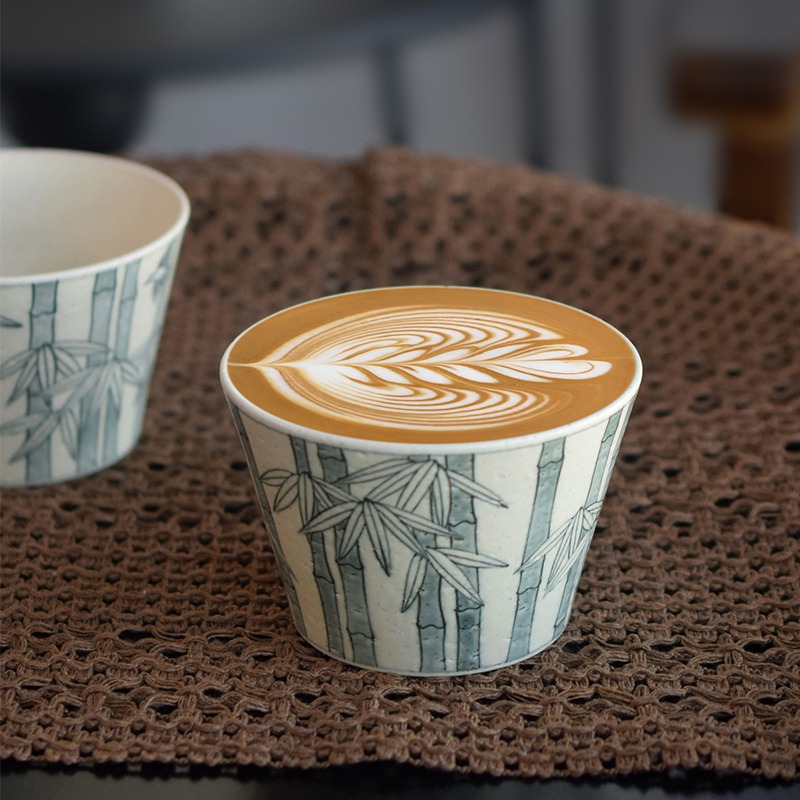
Bamboo represents “humble strength”—outwardly modest yet inwardly resilient, both gentle and firm. Tall and sturdy, bamboo has a hollow structure, symbolizing humility and inner tolerance.
Bamboo in Hand-Painted Ceramic Design
In hand-painted ceramic cup designs, bamboo often serves as an artistic muse. Each bamboo branch and leaf depicted carries forward its spirit. In Peony Ceramics’ hand-painted cups, bamboo is rendered with exquisite detail. The delicate brushstrokes capture its grace and fortitude, showcasing its resilience even in wind and rain. This bamboo-themed ceramic cup is like a steadfast companion, accompanying you as you sip your morning coffee, infusing your day with strength.
Corresponding Personality: The Sage. Bamboo’s virtue aligns with the “sage,” a figure of high moral character, profound wisdom, and depth. Though outwardly humble, they possess immense inner strength and firm convictions. Bamboo holds a special place in Chinese culture as one of the “Four Gentlemen.” It grows rapidly, standing tall and straight, symbolizing resilience and integrity. Its hollow core also represents tolerance and humility. Thriving in barren soil, it remains fresh and upright, enduring frost and wind, standing firm in the world.
Classic Association: Wang Huizhi’s remark, “How could I live a single day without this gentleman?” Wang Huizhi, a scholar of the Eastern Jin Dynasty, praised bamboo in Bamboo and Stone, believing its character mirrored that of a virtuous scholar. His famous saying—”How could I live a single day without this gentleman?”—reflects bamboo’s uprightness and the inseparable bond between its resilience and a scholar’s virtue. Bamboo does not flaunt itself, yet its tenacity and purity resemble a person of profound wisdom and depth.
Winston Churchill perfectly embodies bamboo’s “humble strength.” His resilience, adaptability, and low-key yet visionary leadership style epitomize bamboo’s spirit. On the global historical stage, Churchill’s influence was profound. His adherence to principles and service to his country exemplified bamboo’s resilience, flexibility, and humility.
4. hand-painted ceramic cups Chrysanthemum — Detachment (The Noble Scholar)
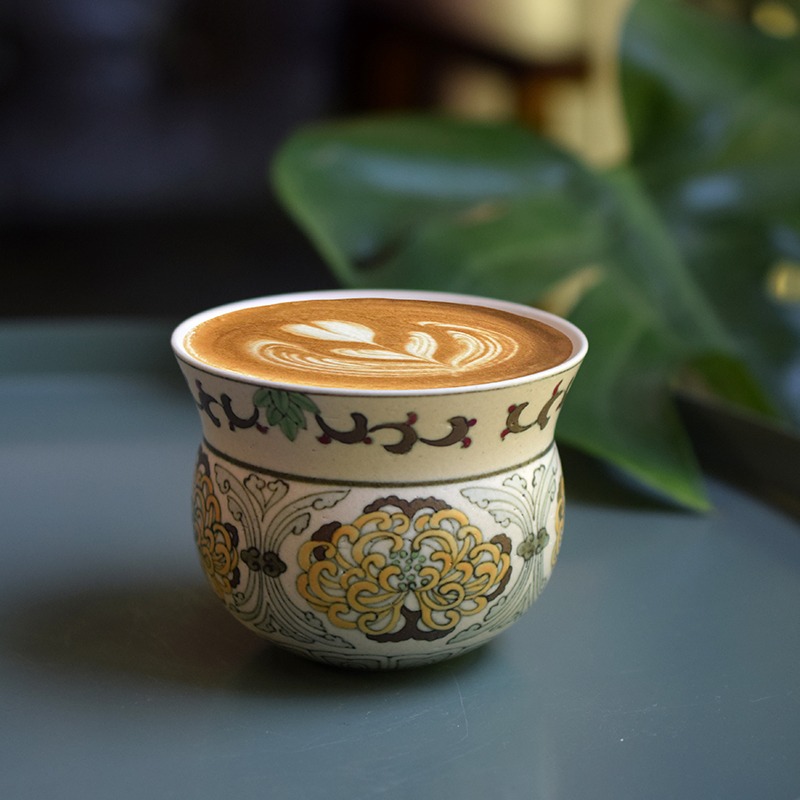
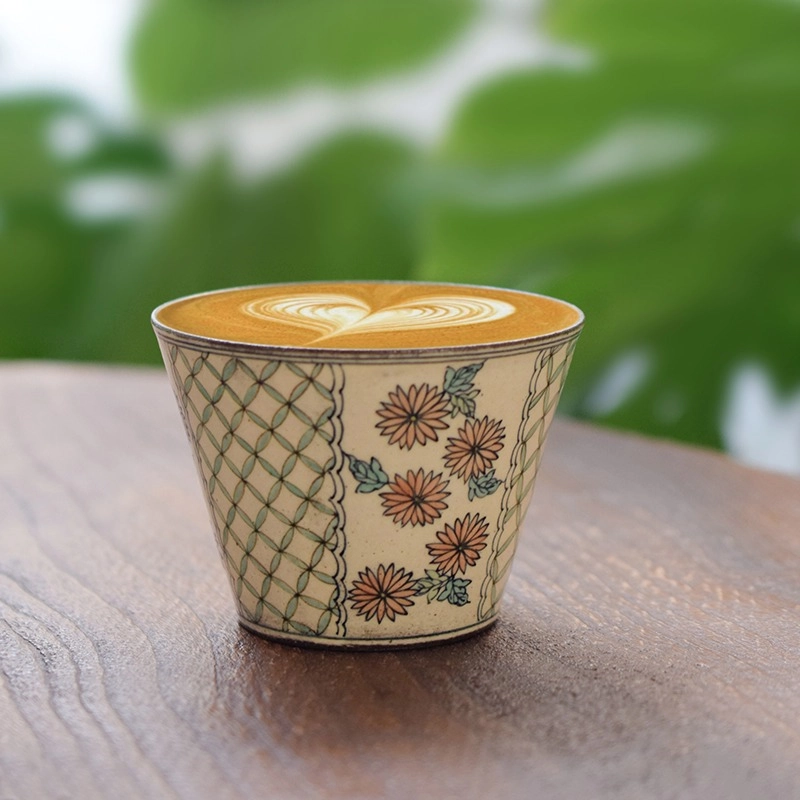
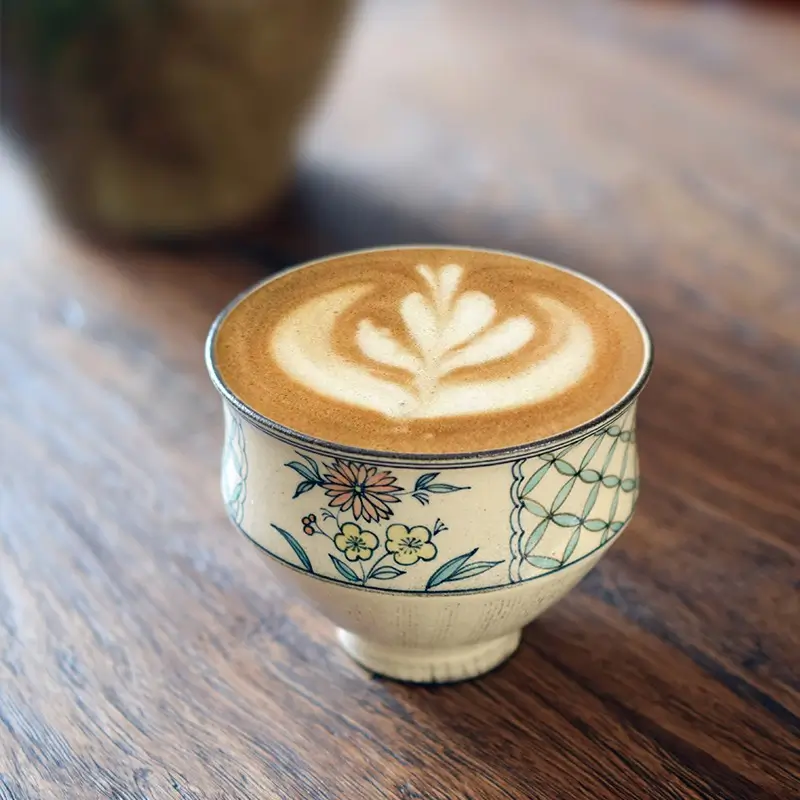
The chrysanthemum represents “detachment,” symbolizing transcendence from worldly concerns, freedom from fame and fortune, and the pursuit of spiritual liberty. Blooming in autumn, it stands firm against the wind, embodying those unshackled by material pursuits and focused on their inner world.
The chrysanthemum motif on hand-painted ceramic cups is often associated with autumn, representing maturity, reflection, and the accumulation of wisdom. Thoreau’s works, set against the symbolism of “autumn,” articulate a philosophy of introspection and growth. His lifestyle echoes the chrysanthemum’s autumnal essence—seeking spiritual richness and independence, untethered to external noise and competition.
Corresponding Personality: The Noble Scholar. The chrysanthemum’s “detachment” aligns with the noble scholar’s temperament. Such individuals are not bound by worldly riches but seek spiritual fulfillment and inner peace. The chrysanthemum symbolizes this detachment and transcendental aspiration.
Classic Association: Henry David Thoreau, an American writer, philosopher, and naturalist, authored Walden, chronicling his two-year solitary life by Walden Pond in Massachusetts. He championed simplicity and self-reflection, embodying the chrysanthemum’s “detachment” and “tranquility leading to far-reaching vision.” Thoreau wrote, “I went to the woods because I wished to live deliberately, to front only the essential facts of life.”
Henry David Thoreau epitomizes the chrysanthemum’s “detachment” and noble scholar demeanor. Through solitude and a return to nature, he demonstrated inner independence and self-sufficiency, much like the chrysanthemum blooming in autumn, detached from worldly clamor and pursuing wisdom and serenity beyond material concerns. Thoreau’s philosophy and lifestyle offer spiritual inspiration, illustrating a life of “tranquility leading to far-reaching vision” in his unique way.
Conclusion
Through the virtues and personalities embodied by plum blossoms, orchids, bamboo, and chrysanthemums, we see different facets of the Confucian ideal of the “nobleman” in Chinese culture. These “Four Gentlemen” are not only beautiful symbols in nature but also moral and spiritual realms to aspire to in life:
- Plum Blossom: Unyielding integrity, the martyr’s resolve, symbolizing indomitable perseverance.
- Orchid: Quiet virtue, the recluse’s temperament, symbolizing inner purity and nobility.
- Bamboo: Humble strength, the sage’s character, symbolizing outward humility and inner fortitude.
- Chrysanthemum: Detachment, the noble scholar’s demeanor, symbolizing transcendence and serenity.
The spirits of these plants have been passed down through traditional culture to this day, continuing to inspire people in art, literature, and daily life to pursue noble character and lofty ideals.
Hand-Painted Ceramic Cups: The Four Gentlemen and Balanced Energy for Mind and Body
Each hand-painted ceramic cup draws inspiration from China’s ancient “Four Gentlemen” (plum blossom, orchid, bamboo, chrysanthemum), incorporating the design philosophy of the Five Elements’ energy. These cups enhance your quality of life and mind-body balance through daily tea or beverage rituals. Each cup carries unique cultural depth and exquisite craftsmanship, offering a distinctive sensory and spiritual experience.
Based on your current mental and physical needs, choose the most suitable cup to infuse every sip with energy and mindfulness.
Bamboo Cup (Wood Energy) – Pursuing Harmony and Growth
- Ideal for: Times of change in life or work, or when seeking closer family bonds.
- Benefits: Bamboo symbolizes adaptability and resilience, helping you find inner peace amid stress. This cup reminds you to stay flexible and harmonious during transitions.
- Suggestion: Perfect for family gatherings, time with friends, or finding calm in turbulent environments. “Like bamboo bending in the wind but never breaking, this cup encourages resilience amid change.”
Orchid Cup (Earth Energy) – Inner Peace and Profound Strength
- Ideal for: Moments needing relaxation, stress relief, or quiet meditation in the evening.
- Benefits: The orchid represents serene elegance and inner tranquility. Drinking from it brings soothing energy, helping you find calm in busy times.
- Suggestion: Best used in the evening with a mild tea to unwind and improve sleep quality. “The orchid’s gentle energy reminds us that true strength lies in tranquility.”
Plum Blossom Cup (Wood Energy) – Igniting Creativity and Courage
- Ideal for: When seeking fresh ideas or needing courage and motivation to face challenges.
- Benefits: Blooming defiantly in winter, the plum blossom symbolizes perseverance and renewal. This cup sparks creativity, helping you see opportunities in adversity.
- Suggestion: Ideal for creative work or as a reminder to brave challenges. “Like plum blossoms breaking through snow, this cup inspires you to shine despite obstacles.”
Chrysanthemum Cup (Metal Energy) – Clarity and Focus
- Ideal for: When needing enhanced concentration, mental clarity, or decision-making focus.
- Benefits: The chrysanthemum embodies focus, clarity, and letting go of distractions. This cup helps maintain clear thinking under pressure, keeping you centered on goals.
- Suggestion: Perfect for work, especially during tasks requiring sharp focus or decisions. “Like autumn wind sweeping away fallen leaves, the chrysanthemum’s clarity helps dispel distractions and maintain focus.”
Why Choose These Hand-Painted Ceramic Cups?
- Hand-Painted Craftsmanship: Each stroke is meticulously painted, infused with traditional Chinese cultural essence for a unique artistic experience.
- Five Elements Energy: More than just tea vessels, these cups harmonize with natural energy through design, enhancing mind-body balance.
- Mind-Body Experience: From cup selection to tea savoring, each sip becomes a mindful ritual, helping you connect with yourself and life’s rhythms.
Ideal For: Tea enthusiasts, meditation practitioners, feng shui lovers, or anyone seeking to elevate daily life through mindful rituals.
“Which energy does your mind and body need today?”


